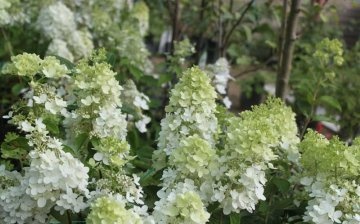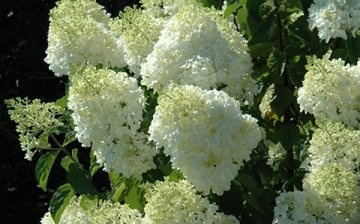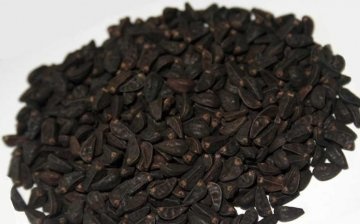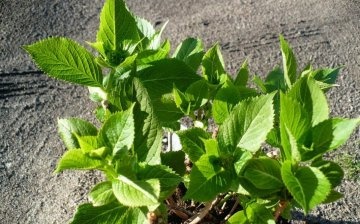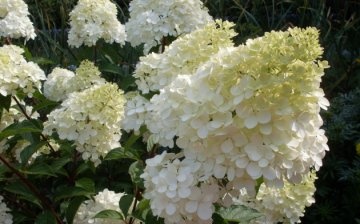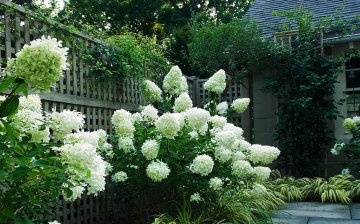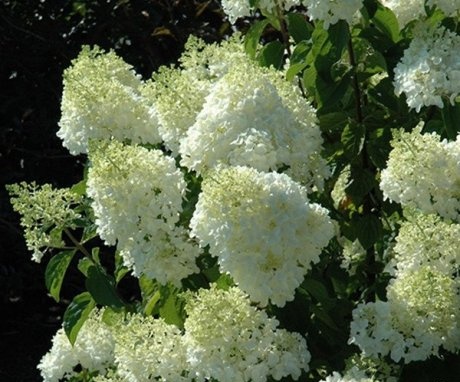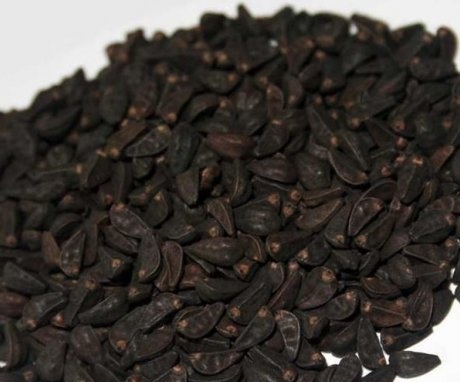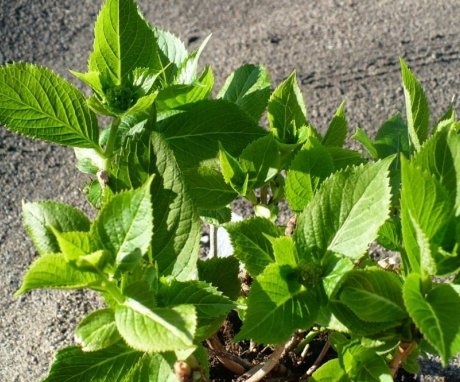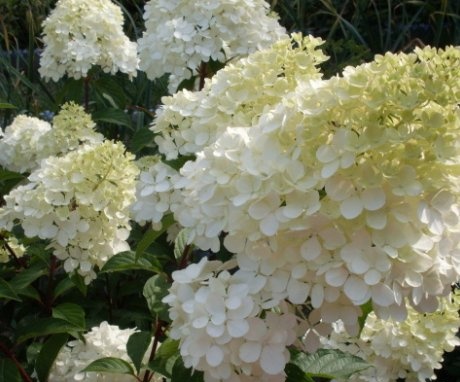Hydrangea paniculata Sugar dreams: description, cultivation, application
Hydrangea belongs to the Dogwood family of the Hortensia family. Under natural conditions, it can take the form of a bush, tree and liana. There are evergreen and deciduous species. One of them is panicle hydrangea, to which the Sugar Dreams variety belongs.
Content:
- Description and features of the variety
- Reproduction methods and rules
- Planting hydrangeas
- How to care for a plant?
- Application in site design
Description and features of the variety
Hydrangea Sugar Dreams belongs to the paniculate species. It can be shaped like a bush or tree. Shoots are straight, covered with gray bark. The root system is located close to the soil surface. Its radius is much larger than the crown.
Hydrangea leaves Sugar dreams are large, more than 10 cm, light green, ovoid. Located on the shoots opposite. From below they are covered with a dense edging, from above it is also there, but almost imperceptible.
Flowers with white petals form wide pyramidal inflorescences.
They are large, up to 25 cm long. The flowers of the panicle hydrangea are divided into two types. External, with large petals, sterile. They are designed only to attract insects to the small and inconspicuous fertile flowers inside the inflorescence.
White petals of small flowers quickly fall off. The beautiful white outer flowers last longer. Their diameter reaches 2.5 cm, and the petals turn pink over time. Hydrangea blooms for 4 years after planting the bush. Flowering begins in mid-June and lasts until October. In place of fertile flowers, fruits are formed - boxes 3 mm long. Chambers 2-5 contain a large number of small oblong brown seeds.
Reproduction methods and rules
Hydrangea is propagated in several ways:
- Seeds (generative way).
- By dividing the bush.
- Cuttings.
- Layers.
Growing hydrangea from seeds is long and troublesome. The result can be a plant that is significantly different from the mother. This will happen as a result of pollination with another variety.
Site preparation and sowing of seeds:
- Seeds are sown after the main frost, light drops in temperature are not terrible for her. The soil is prepared in the fall. Look for an area slightly shaded from direct sunlight. The soil should be loose, neutral acidity or slightly acidic. Digging up the ground.
- In the spring, the site is freed from weeds that have managed to grow. They loosen the soil, sow the seeds of hydrangea Sugar dreams on the surface. They are rolled up, covered with a low layer of sifted sand or earth from above.
- The site is kept moist, but conditions are not created for moisture stagnation. Seedlings do not appear soon, but grow slowly.
- After they appear on the surface, they constantly loosen the soil from weeds, feed them with a complex fertilizer, for example, "Aelita-flower".
- For the winter, the sprouts are covered with spruce branches or non-woven materials. And only by the end of the third year, hydrangea bushes are considered adults. They are transplanted, they begin to cut off, forming a crown.
You can grow hydrangea from seed in a pot.
- Peat and leaf soil are mixed, river sand is added.
- Sow seeds on the ground, sprinkle with sand.
- Water from a sprayer.
- Cover with glass to maintain a constant climate. Temperature for germination is 15-20 ° С.
- Seedlings will appear in 1-1.5 months. The glass is removed.
- When the seedlings grow dive them in a separate bowl with a diameter of 7 cm. The procedure is carried out 2 times.
- After the second transplant, they begin to harden, exposing in a protected place.
It is better to store hydrangea grown from seeds in room conditions in the house for 2 years, taking it out in a warm period, and then planting it. The buds that form during the growing process are plucked so as not to weaken the plant.
It is necessary to propagate by dividing the bush in early spring, when the buds have not yet opened.
A small bush is dug out completely, divided into parts and transplanted to a new place. You can separate a part of a large bush with a sharp shovel and use it for reproduction. The cut site is disinfected.
Cuttings are cut during spring pruning. The cut part is cut into pieces with two knots. The distance from the cut point to the node is not less than 2 cm. The lower cut is oblique, the upper cut is straight. They are treated with a rooting agent. They are planted in a greenhouse with loose soil, in which the humidity is constantly maintained close to 100%. They are immersed to a depth of 3 cm.
To obtain layering, some inclined branches are added in the spring. Over the summer, roots will form in the place of the ditch. After the cuttings take root, they are transplanted to a new place. Usually, they will have time to take root before the fall.
Planting hydrangeas
Bushes of panicle hydrangea are planted Sugar dreams in light partial shade. Under the bright sunlight, its petals quickly fade and lose their decorative appearance. The soil should be the same as when sowing seeds - slightly acidic or neutral.
Fertilizers are applied, including mineral fertilizers, to which the plant reacts well. You can acidify the soil with Asid plus or by adding high-moor peat. Examining the trees growing nearby. They should not have a wide surface system, which will further fight hydrangea for nutrients.
A pit is prepared, the width of which is 2 times wider than the earthen lump of the seedling.
Fertilizers are applied. Before planting, the hydrangea is pruned. When grown in the form of a bush, 3 buds are left, from which young shoots will subsequently grow. When grown in the form of a tree, the top buds are left from which branches will form.
How to care for a plant?
In order for hydrangea to grow healthy and delight with its beautiful flowering, you need to properly care for it:
- Hydrangea needs regular watering. In summer, during drought, each bush should receive 2 buckets of water. If it grows in partial shade, you need to add water less often.
- It is imperative to loosen the soil to a depth of 6 cm. This promotes rapid growth.
- Do not apply a large amount of nitrogen fertilizers. They will cause the shoots to grow rapidly upward, but bloom very little, or not bloom at all.
- From the age of four, the panicle hydrangea begins to be cut every year in the spring. The operation is performed after the kidneys are slightly swollen. Cut off a third of the shoot and use it for cuttings. If they are not needed, they can be trimmed before the buds swell.
- When the hydrangea becomes old, it loses its decorative effect. To restore it, pruning is carried out on a stump or on perennial wood. Already in the second year after the procedure, she is recovering. New shoots grow, which bloom during. Thus, the plant can live up to fifty years.
- For growing in the form of a tree, one shoot is left. Pinch the shoots 2 times per summer. In the middle of summer, the side branches are cut out completely, into a ring. The conductor is pinched every year in the spring until the bud is developed. When the trunk has grown, a crown is formed at a height of 1 m. The upper shoot is cut off, branches grow from the lower 5 buds.
- Hydrangea is practically not damaged by diseases and pests. Sometimes, at high humidity, plaque appears on young shoots powdery mildew... You can fight the disease by treating fungicides.
Hydrangea tolerates frosts well up to 25 degrees. Paniculata is one of the most frost-resistant species due to the fact that its shoots are completely lignified. But sometimes they still freeze. They are cut low and wait for new ones to grow. Within a year, the hydrangea recovers and continues to bloom. You can protect against freezing by covering it with spruce branches.
For the same purpose, they spud the bushes in late autumn, mulch near-trunk circle. Consider that the root system is wider than the crown. Wet snow falling in large quantities can damage the bush. To protect against breaking off the shoots in the fall, cut off the remaining caps of the inflorescences.
Application in site design
Hydrangea will decorate any area. She is beautiful until late autumn. Planted singly or in groups with other plants. Looks beautiful together with conifers, including ground cover, against the background green lawn... Flowering annuals are planted against the background of hydrangea.
Against the background of a fence or support, it is combined with honeysuckle or grapes... Hydrangea can be used to create a hedge. It can be cut in the form of a plane, a ball, a cone. Flowers are cut for a long time.
More information on when and how to properly trim hydrangeas can be found in the video:



